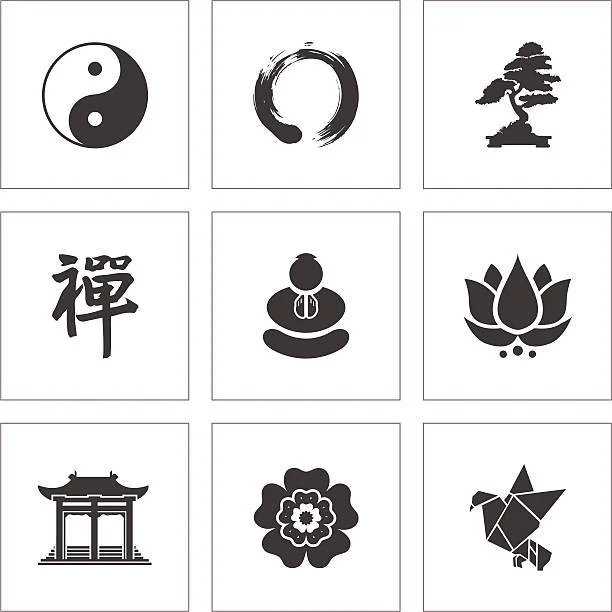As far as I can tell there are 5 types of daily chants we do at San Francisco Zen Center. I’m sure there are much more rigorous and correct taxonomies of chants created by professors or experts in Buddhism, but here I’m trying to just list out the types of chants you are most likely to encounter on daily basis by how I experience them as a beginner as I think this will be most useful to you to orient around if you are just starting your Zen journey too.
In the meditation hall:
Even if you only stay for meditation you will hear the short ‘robe verse’. In our temple we recite it twice in Japanese then once in English. The English translation is “Great robe of liberation / Field far beyond form and emptiness / Wearing the Tathagata’s teachings / Saving all beings”.
My dad maintains that the robe in this verse is a metaphor for enlightenment, my mom thinks it is much more about the monk’s robes themselves and the meaning of putting on robes. I’ll give you my take in a future lesson, but just know that you don’t have to understand the chants perfectly to join in and that even the people around you will have different understandings and that your understanding will change over time.
Renunciation and refuges:
We recite these verses while facing the Buddha statue and bowing. I think these are some of the easiest chants to understand and remember. For me, these are about recommitting daily to the core Buddhist path and they feel really powerful to do together in a group. There is a line in the refuges about making this commitment “before all beings” which captures this idea of recommitting in public and as a group.
Long English verses:
There are some really long verses but you will get a chant book handed out that you can use to follow along. A lot of these verses are from texts that are a thousand or so years old and so can be quite hard to understand. My advice is to just roll with it and not worry too much about understanding up front. Over time you can do background reading on them and also just think about the meanings.
Short Japanese verses:
An example of a short Japanese verse we chant at San Francisco Zen Center is ‘Maka Hannya Haramitta Shin Gyo’ which is the Japanese version of Heart of Great Perfect Wisdom Sutra. This is chanted to a beating drum and has a very ceremonial feel. I don’t speak Japanese so I just follow along the sounds “ Kan ji zai bo satsu gyo jin han nya ha ra mit ta ji sho ken go on kai ku do … … …”.
Short untranslatable verses:
An example of an untranslatable verse is Shosaimyo Kichijo Darani. The full chant is:
No mo san man da
moto nan
oha ra chi koto sha
sono nan to ji to
en
gya gya
gya ki gya ki
un nun
shifu ra shifu ra
hara shifu ra hara shifu ra
chisu sha chisu sha
chishu ri chishu ri
soha ja soha ja
sen chi gya
shiri ei so mo ko
You can hear it being recited in this youtube video and hear how it is repeated with the speed increasing with repetition.
It is thought that this verse was originally written in Sanskrit then translated to Chinese, then to Japanese. So the sounds all appear in Japanese but the power is not in the words but the sounds themselves, like a mantra. Chanting this in a group has a really special feeling, although I can’t quite say what that feeling is.
I hope reading this makes you more confident to stay and join in the chanting. You don’t have to understand everything up front or get everything right. Just follow along and see how it makes you feel.
In future lessons I will dive deeper into specific verses.
